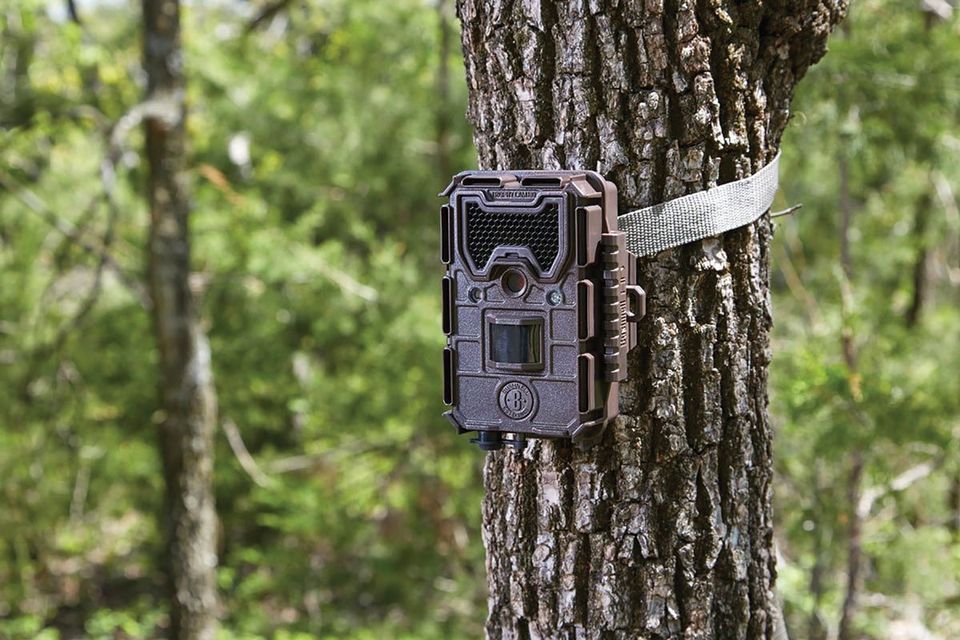New Rule for Arizona Hunters

Trail cameras have become more advanced, easier to operate and less expensive. They also produce higher quality photos with faster response times and fewer rear ends of animals who moved too quickly across the field of view before the camera turns on and takes the photo.
Remote cameras can reveal the mysterious world of secretive outdoor wildlife and make it more visible and accessible. A properly set camera trap will capture moments in the wild that would be impossible for somebody to take manually. In this way, remote cameras can be used as a tool for an art form we haven’t seen before — those fleeting glimpses of rare wildlife caught at any hour of the day or night. With a little thought into the photo’s composition and background, amazing masterpieces of nature can be made with a little luck and patience.
For wildlife research purposes, these cameras can save tons of time and money. They could allow biologists to figure things out quicker with more confidence to help wildlife more efficiently and timely. For example, the intensity of water catchment use by different species of wildlife can be quickly determined or highway crossings can be evaluated for their effectiveness in allowing safe passage of wildlife through road corridors. Camera traps can capture rare animals in remote habitats or help identify the culprit in the case of the missing chickens.
Cameras are increasingly being used for security and documenting trespassers, even in the most remote areas. Trail cameras can also now be used to conveniently take long-term time lapse series of photos revealing changes happening at Mother Nature’s slower pace. None of these uses are all that controversial. Recently, however, there has been discussion about changing laws regarding trail cameras when used for hunting purposes.
The Arizona Game and Fish Commission decided last fall to ban the use of cameras that transmit their images wirelessly through mobile cellular, WiFi or Bluetooth technology. The Commission did allow continued use of cameras near constructed water sources, such as catchments with drinkers and tanks, as long as you have to physically visit the camera to retrieve photo or video files. The Commission listened to arguments on all sides of this issue — from people stating that it is an unfair advantage to those saying that cameras don’t increase their chances of filling a tag that much since cameras are such a small part of the entire process. That is certainly true for a hunter using just a few cameras but guides who depend on reputations for finding trophy animals for clients sometimes deploy dozens of cameras, investing significant time in maintaining the cameras and examining the photos. With that many cameras monitoring a limited number of water sources 24/7, it is much easier to find the general home range of the biggest bulls and bucks.
In the long term, camera use for hunting might make it more efficient in filling tags, which could then change the success rate variable used in calculating how many tags to issue for a hunt unit. A higher success rate with a stable population goal could mean fewer tags issued or other changes in the hunt structure that would compensate for the higher success rates, such as a shorter season. Is that what hunters want? Hunting regulations have been changed over the years to adjust for other improvements in technology, such as the gradual improvements in rifle scopes or ammunition ballistics, so are cameras just another example of improved technology?
Trail Camera Code of Ethics?
Nobody can claim exclusive hunting rights near a public lands water source — no matter how many cameras or no matter how long they’ve been there. In most cases, the hunter who gets to the area first during their hunt season should be able to hunt undisturbed. With more than one hunter together on a waterhole, chances are that the game they’re pursuing will see or smell one of them, ruining chances for everybody. Smart hunters back off water holes and work areas that their game will be travelling through to get to the water. These same hunters will spread out their cameras also.
A growing problem is theft of trail cameras. Some people think stealing somebody else’s cameras will discourage others from the area. On the contrary, stolen equipment probably means that a big animal is in the area and somebody doesn’t want you to know that. With the increase in the number of cameras in the field, it’s becoming easier to catch thieves but, nonetheless, more problems could bring more oversight and regulations could follow. That’s usually not something people want when out recreating in remote areas.
Since the wireless download of photos and videos is not allowed for hunting purposes near developed waters, camera trappers have to physically visit their cameras to retrieve the information. Camera operators can exchange the memory cards during the day when it’s least likely to spook any animals or disturb anybody on a hunt. Doing it as quickly as possible, with the least amount of disturbance, probably won’t change any wildlife patterns.
Are there any other issues related to remote cameras and the concept of fair chase rules? Does the use of dozens of cameras by a guide fit into the current North American model of hunting, which emphasizes hunting access for all citizens, not just the wealthy who can afford guides?.
So, with additional people using our public lands every year and trail cameras becoming more accessible and affordable, you might want to be careful where you chose to relieve yourself on your next outing. And if you use cameras for your next hunt, make sure you’re aware of the new rules banning the wireless downloads. In the future, cameras will allow us to enjoy moments from the woods otherwise unobtainable — if we can learn to respect other people’s property and follow
the rules.











